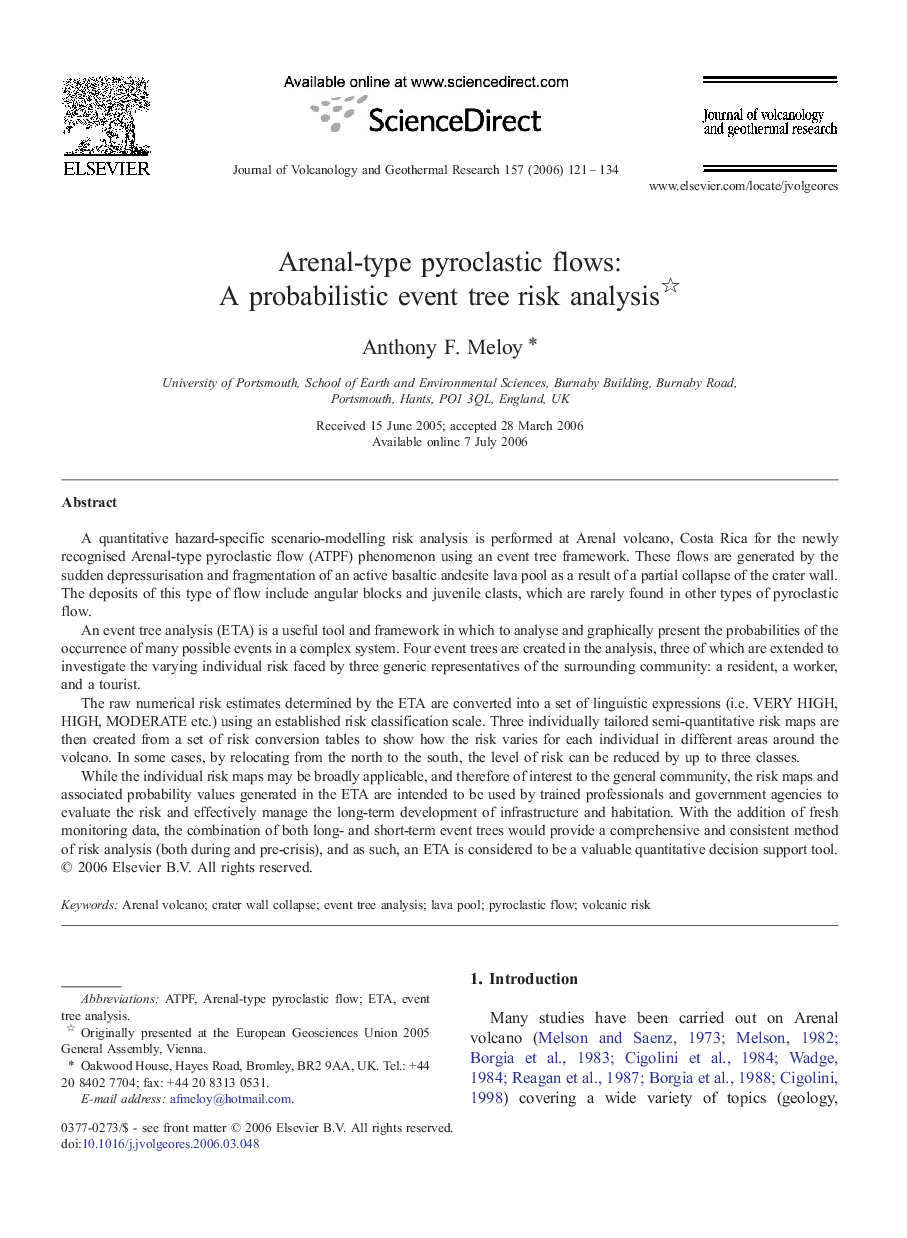| کد مقاله | کد نشریه | سال انتشار | مقاله انگلیسی | نسخه تمام متن |
|---|---|---|---|---|
| 4715361 | 1638472 | 2006 | 14 صفحه PDF | دانلود رایگان |

A quantitative hazard-specific scenario-modelling risk analysis is performed at Arenal volcano, Costa Rica for the newly recognised Arenal-type pyroclastic flow (ATPF) phenomenon using an event tree framework. These flows are generated by the sudden depressurisation and fragmentation of an active basaltic andesite lava pool as a result of a partial collapse of the crater wall. The deposits of this type of flow include angular blocks and juvenile clasts, which are rarely found in other types of pyroclastic flow.An event tree analysis (ETA) is a useful tool and framework in which to analyse and graphically present the probabilities of the occurrence of many possible events in a complex system. Four event trees are created in the analysis, three of which are extended to investigate the varying individual risk faced by three generic representatives of the surrounding community: a resident, a worker, and a tourist.The raw numerical risk estimates determined by the ETA are converted into a set of linguistic expressions (i.e. VERY HIGH, HIGH, MODERATE etc.) using an established risk classification scale. Three individually tailored semi-quantitative risk maps are then created from a set of risk conversion tables to show how the risk varies for each individual in different areas around the volcano. In some cases, by relocating from the north to the south, the level of risk can be reduced by up to three classes.While the individual risk maps may be broadly applicable, and therefore of interest to the general community, the risk maps and associated probability values generated in the ETA are intended to be used by trained professionals and government agencies to evaluate the risk and effectively manage the long-term development of infrastructure and habitation. With the addition of fresh monitoring data, the combination of both long- and short-term event trees would provide a comprehensive and consistent method of risk analysis (both during and pre-crisis), and as such, an ETA is considered to be a valuable quantitative decision support tool.
Journal: Journal of Volcanology and Geothermal Research - Volume 157, Issues 1–3, 15 September 2006, Pages 121–134